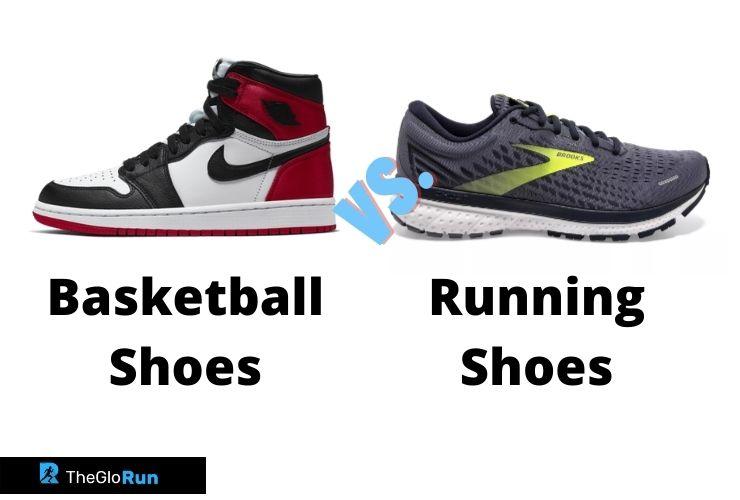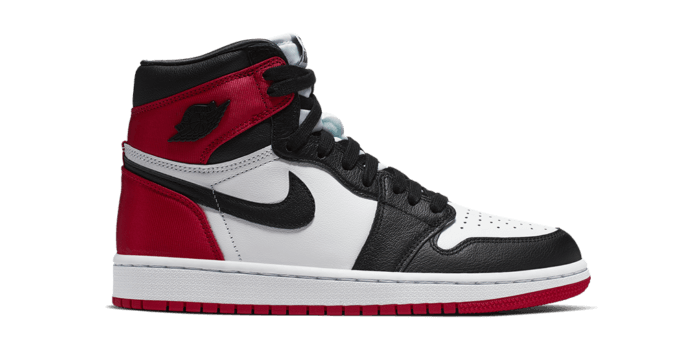If you have a pair of basketball shoes in your closet, you may want to double it up as running gear, perhaps to save money. But is running in basketball shoes really good?
Yes, you can run in basketball shoes, especially if you are doing short distances.
However, a pair of basketball shoes are not the best option because they are heavier than running shoes. As such, you will get tired pretty fast.
Running in the wrong type of shoes can lead to muscle soreness and injuries. It can also slow you down and adversely affect your form.
In order to answer the question effectively, I will compare different features of running shoes and basketball shoes.
What’s the Difference Between Basketball Shoes and Running Shoes?

Basketball shoes differ from running shoes in several ways. Here, I shall look at the differences in the following:
- Movements/design
- Weight of the shoe
- Weight of the user
- Traction and grip
- Speed
- Brand
- Personal risk
- Sole durability
- Cushioning
- Movements/ Design
Running shoes are primarily designed to encourage forward motion and support gait. They are also light and flexible to provide a comfortable and free run. They have patterns and grooves on their outsole to provide the needed grip on various terrains.
Almost all running sports shoes have excellent cushioning. This plays a key role in shock and pressure absorption, which results from the impact of fast repetitive landing.
On the other hand, basketball sport shoes support multi-direction short movements. This includes side to side direction, front and back movements. NBA players love them because they are firm, stiff, and heavy to bolster all-around movements on a basketball court.
This pair of shoes has a flat surface which provides a good grip on the flat court during a game. They also have rubber outsoles to provide flexibility and stability for the court.
Another key feature of basketball sport shoes is that they have a high top to provide additional ankle support. This way, they help prevent sprains and injuries.
Weight of the Shoe
Running shoes are lighter than basketball shoes. Therefore, using basketball shoes for longer runs would be tiresome as compared to using regular running shoes.
Also, regular use of basketball shoes for running can lead to severe foot and ankle injuries resulting from pulling a heavyweight shoe.
However, if you only do occasional short runs, basketball footwear will do fine. But if you are a frequent runner, investing in a good quality running shoe is a must.
Weight of the User
The weight of the user greatly determines the appropriate shoe to wear and its performance.
If you are a heavier person, running in basketball sport shoes proves to be an ideal choice. Since these shoes are heavy, they can handle and hold up your body mass pretty well. For your safety, they also have excellent shock absorption, traction, stability, and ankle support for maximum protection.
Nonetheless, it is recommendable that you wear running shoes if you do frequent runs.
Traction and Grip
Basketball shoes are made with flat rubber outsoles. As such, basketball players love them for their excellent shock absorption, traction, and flexibility for all-around movements, abrupt stops, and jumping.
Running footwear comes with different types of outsoles based on the terrain and the kind of run you will need them for. They have perfect arches for stability and grip when running.
Racing shoes feature spikes that help with building speed, thus enhancing your overall performance. They also have thick lug patterns to provide grip and traction on the ground. Therefore, running in basketball shoes may not provide enough traction for various surfaces.
Speed
If you are a pro runner, basketball shoes are not ideal. They are heavy and will affect your running speed immensely.
Shoes designed for running are light and comfortable. This way, they enhance your forward motion, producing better speed and performance.
Brand
Shoes indeed differ depending on their specific brands. Some basketball shoes are lighter, with proper cushioning, flexibility, and support. In this case, you can comfortably use them for occasional runs.
However, basketball shoes are suitable for shorter distances, preferably less than three miles, unlike running shoes. You should avoid frequent/ daily use because basketball shoes may build up fatigue, cause sprain, and other related injuries.
Personal Risks
A basketball shoe is most suitable for playing a basketball game. Wearing basketball shoes frequently on longer runs could lead to serious ankle problems. It can also cause a burning sensation or tingling in the foot.
Wearing basketball shoes for prolonged periods of running can also cause sprains, shin splints, ankle joint dislocation, Achilles tendonitis, plantar fasciitis, and other related foot problems.
Proper running shoes provide the necessary comfort and bolster for a run.
Note: You should never play basketball in running shoes. Running shoes have minimal ankle support, and the chances of spraining your ankles are very high.
Sole Durability
It is also important to note that using a basketball shoe for running compromises their durability. Running shoes have stiffer soles, suitable for roads and pavement running.
Basketball shoes are made with flat, softer soles and are most appropriate for indoor flat court use when playing basketball. Outdoor use risks damaging their sole.
Cushioning
Basketball shoes tend to have their cushioning concentrated more in the mid-foot area. As such, NBA players prefer them for they are better at quick maneuvering when playing basketball.
Running shoes tend to cushion the forefoot and heel areas. This cushion provides shock absorption that is equivalent to two and a half times your overall body weight while running. As such, you can run for extended periods on any terrain with enough support and comfort.
Strengths and Weaknesses of Basketball Shoes in Running
| Strengths | Weaknesses |
| Excellent traction | Heavy |
| High level of stability | Not ideal for outdoor use |
| Provides perfect ankle support (the high-tops) | Lower shock absorption |
| Flat heels are suitable for landing | Not suitable for sandy or snowy surfaces |
| Encourages quick lateral movements | Not suitable for longer runs |
| High level of cushioning |
Types of Basketball Shoes
There are three distinct types of basketball shoes. They provide varying levels of support which can either help or harm pre-existing conditions or vulnerable spots. However, the ultimate choice of the shoe to use depends on your playing position on the court.
High-top Basketball Shoes

These shoes provide the best stability and ankle stability to basketball players. It is best suited for players in the forward or center position.
Mid-top Basketball Shoes
This footwear will offer protection to your ankles while allowing you to have a broader range of motion. They are suitable for all-around players due to their versatility.
Low-top Basketball Shoes
This type of footwear is ideal for fast players. If you play in the guard position, these are the best shoes for you. They are lighter and have better mobility than their counterparts.
They support quick movement and have better breathability. On the flip side, they compromise ankle protection, thus increasing the possibility of ankle sprains.
Note: The three types of basketball shoes above are best suited for players and not runners. They are still heavier than the typical running shoes.
Types of Running Shoes
Pronation
Running shoes fall under two broad categories; under-pronators and over-pronators. Under-pronation, also known as supination, is when the runner rolls their feet outwards as they run.
Over-pronation means that a runner rolls their feet too much inwardly as they run. Individuals with high arches tend to under-pronate while those with low arches over-pronate. As a result, running shoes are further categorized into three distinct types to suit the over-pronators and under-pronators.
They are designed based on:
- Stability
- Cushioning
- Motion control
Both stability and motion control shoes provide extra padding and support for runners who roll their feet inwardly as they run.
Stability shoes are suitable for mild over-pronators as they provide extra support for the inner sides of your foot and arches. They also offer middle support, additional rear foot stability, and forefoot flexibility.
Motion-control shoes are ideal for severe over-pronators or people with flat feet.
Extra cushioned running shoes are best suited for runners whose feet roll outwardly or have high arches.
Conclusion
Running in basketball shoes is appropriate only if you are an occasional runner. There is no big deal if you do short miles of two to three miles once or twice a week. However, if you run more often and longer distances, you should consider investing in proper running shoes.
Basketball shoes encourage roundabout movement rather than forward motion. As such, they will not provide the necessary stability and cushioning for a continuous run. They are also heavy and can slow you down, cause fatigue, muscle sprains, and feet injuries when used for running.



Join the conversation